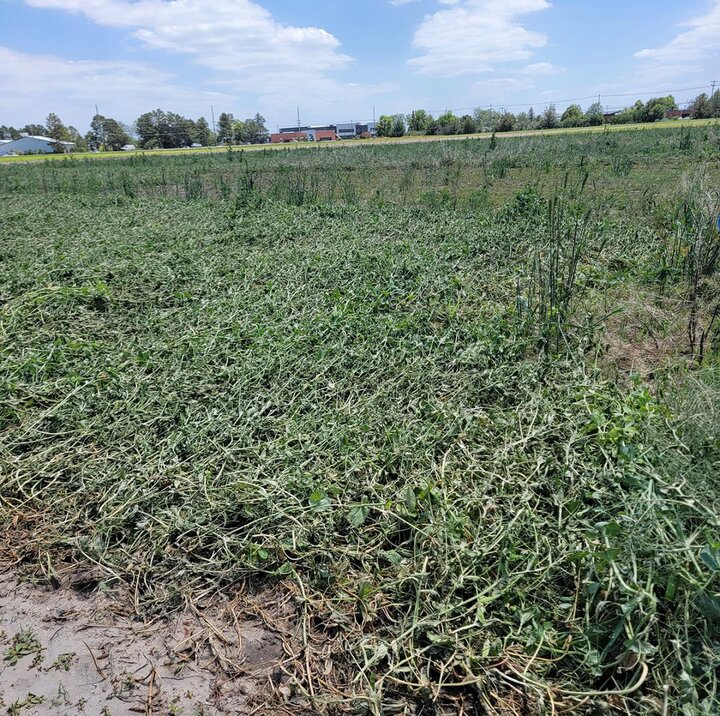Storms coming out of Chugwater and Hawk Springs, Wyoming led to tornados and hail in the Panhandle on June 23.
“The primary storm tracked through Chugwater to Hawk Springs to Scottsbluff. It’s what we call a cyclic tornadic thunderstorm. It periodically produces tornados that drop down and then back up,” said Rob Cox, National Weather Service in Cheyenne, Wyoming, meteorologist.

The secondary storm produced more hail from pea to softball size. The University of Nebraska-Lincoln Panhandle Research Extension and Education Center had some of the larger hail damage vehicles, the greenhouse, and many of the plots with various crops.
One of the crops at the extension center hit hard was the winter peas, in a research study led by Dipak Santra, Nebraska Extension alternative crop breeding specialist.
“It was a beautiful-looking field, I was so happy last week,” he said. “I came on Saturday morning, and everything was flat.”
The winter peas were in the flowering stage, and many had pods, but after the hail, the plants are a loss. Santra had some other plots of spring peas, which were not as far along in growth and could still produce a decreased yield. He cautions growers with peas to be on the lookout for bacterial blight.
Anytime enough plant material or foliage is lost, it increases the chance of bacterial or fungal disease.
“It’s always possible, but the disease had to be present before it would spread around,” said Bob Harveson, Nebraska Extension plant pathologist.
With the damage to plants, the likely challenge will be bacterial, such as bacterial wilt and common blight. Harveson said both are distributed through winds, debris or splashing water.
The dry edible beans at the extension took the biggest hit but look to be OK, and the Mitchell plots are good. Another problem the extension and area growers will need to be aware of is weeds.
“Weeds germinate better when there is not any vegetation above them,” said Nevin Lawrence, Nebraska Extension integrated weed management specialist. “With the defoliation that did occur, we can expect more weed germination.”
The lack of a canopy could mean applying a soil residual herbicide to prevent weeds. Lawrence said, depending on your last herbicide application, you may already have an effective herbicide applied. If not for corn and sugarbeets, herbicides include Dual and Warrant, and in dry edible beans, post-emergence growers can use Outlook.
If you decide to replant, Lawrence said growers should be aware of replanting restrictions if they go from corn to dry bean or wheat.
The center, like many farmers, has crop insurance on some of its plots.
“Producers who have crop damage from the storm should be in close contact with their crop insurance agent,” said Jessica Groskopf, Panhandle ag economist. “Once a field has been inspected by an adjustor, options for management of affected fields will be more clear.”
For more information on hail, and crops, visit the extension disaster education page or Hail Know.
